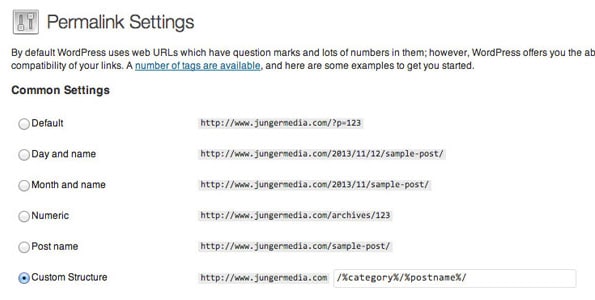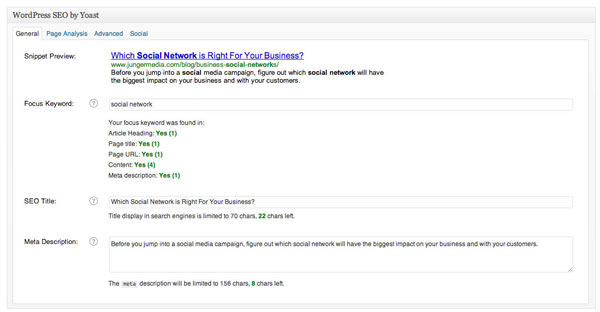Best Practices for Fixing Common WordPress SEO Problems
by Jason Unger, Founder
Insights / Digital Marketing /

Search engine optimization (SEO) is one of the biggest industries that has grown out of the development of the Internet.
For companies that live and die by the traffic and exposure they receive from Google and Bing, anything that can be done to improve their search engine rankings is crucial. (But you know that we recommend not relying solely on search engines to send customers to you; be more active in telling your audience what to do.)
There’s so much information we could discuss about SEO, and there’s a lot of resources that go really in-depth, including:
If you’re interested in learning everything there is to know about SEO, start there.
Today, let’s walk through some common WordPress SEO problems and why it’s important for you to make sure you’re implementing best practices for your site.
What Permalink Settings Should I Use? Keywords / Post Name, Not Dynamic Post IDs
WordPress has a few different options out of the box for how your permalinks (the final URL) should be built. Under Settings -> Permalinks, you’ll see this:
The default option is to use “?p=” with the ID of your page or post appended. You’ve also got options to use the day and name, month and name, a number archive, the post name or a custom structure.
Ideally, you should use either the Post Name option or a Custom Structure with Category and Post Name (as we do). Do this both for the user experience — so your audience knows what the content is about while the page is loading — and to help make your content evergreen and not seem out-of-date (assuming that’s the type of site you run; news publishers may choose a day and name or month and name option).
Why Aren’t My Results Being Clicked? Write Clear and Unique Titles
We’ve talked plenty about writing good headlines before, and when it comes to convincing a searcher that they should click on your content from the search results page, you need to focus more than ever.
Think about your own experiences when looking for information online. If you’re on a Google results page, you likely quickly scan over the results and look for the title that has the information you need. If you see it, you click on it.
Write a title that’s clear and unique and tells the search engine user what information you have for them. If it’s what they need, they’ll click.
To write unique titles and descriptions for search engine results (and to preview what your results would look like), we recommend the WordPress SEO plugin by Yoast. Here’s what the tool looks like for our recent post on social networks for businesses:
Do I Need a Sitemap? Build Them, Submit Them and Keep Them Updated
The easiest way for Google and Bing to know what content you have on your site is to tell them your self. A sitemap lets you do that.
No, we’re not talking about the page on your site that acts as a map for your users (though that certainly can help their user experience); we’re talking about a special file designed to tell search engines the pages you have on your site, how important they are and how often they’re updated.
They’re built on XML, and often look something like this (from Wikipedia):
With WordPress, there’s plenty of options to automatically build and update your sitemap. Yoast’s plugin does it, as well as one we’ve been using for years: Google XML Sitemaps.
After installing either plugin, generate your sitemap and submit it to Google Webmaster Tools and Bing Webmaster Tools. The sitemap will automatically regenerate when new content is posted and let the search engines know that there’s new content to index.







